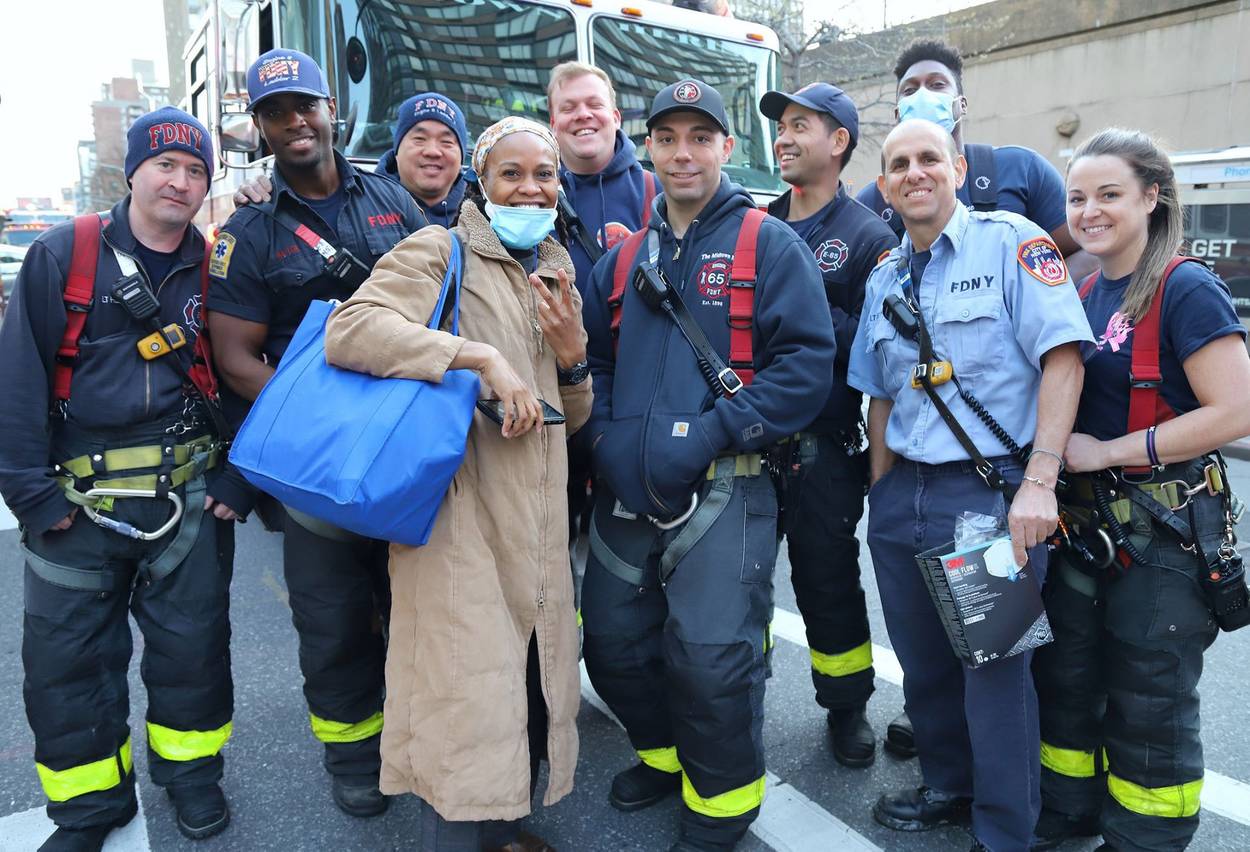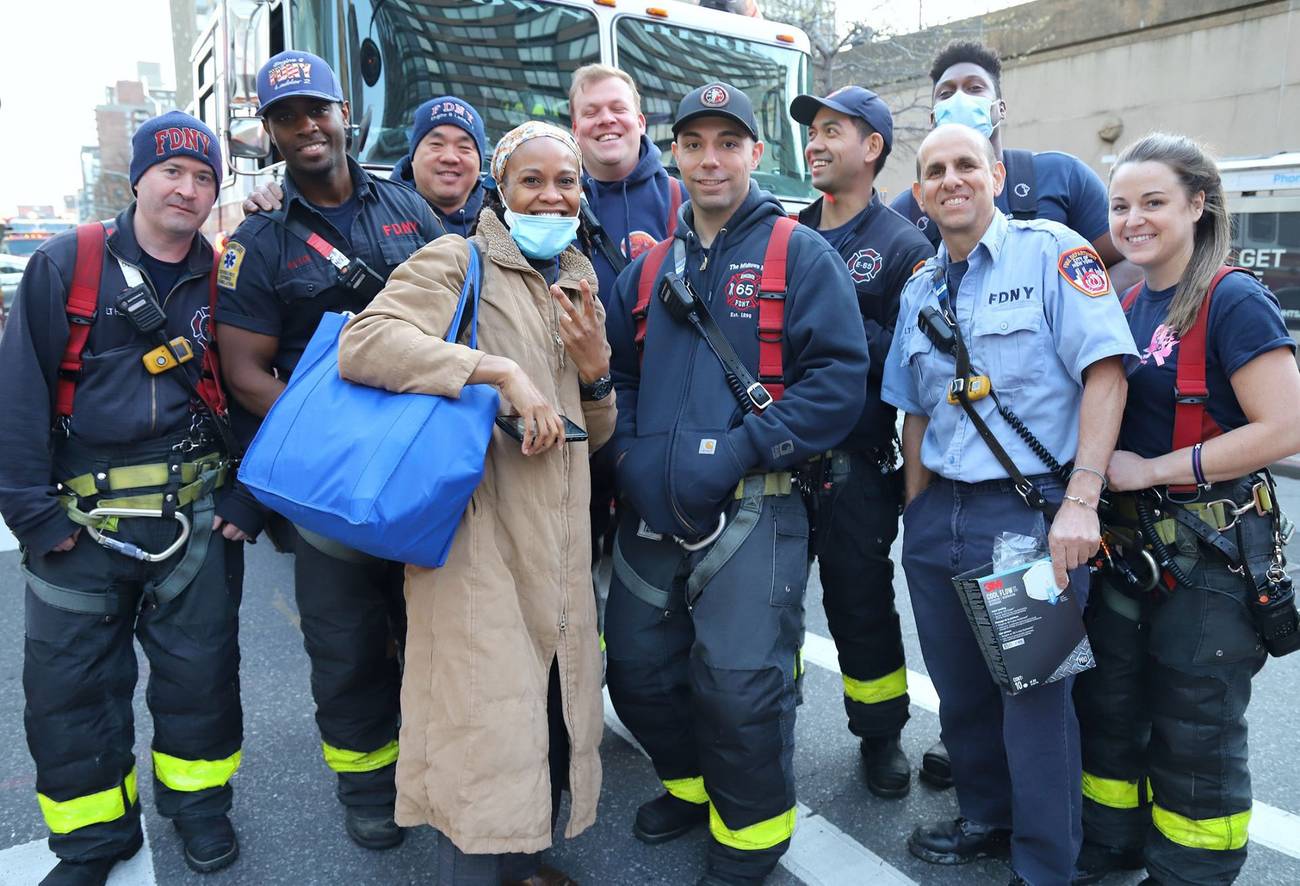On Recovery and Rainbows
There is no bright side to COVID-19. But there are moments of beauty and hope amid the terror.




On March 24, I wrote a story for Tablet about having COVID-19. I have no memory of writing it.
I’m happy to report that I’m almost entirely well now. All that’s left is some chest tightness (which may amount to nothing, or may be a long-term new normal for me; we simply don’t know enough about the long-term impact of COVID-19 on the body).
When I wrote that piece, there had been 3,492 confirmed cases in New York City and 33,000 in New York state. As of April 22, there have been 142,432 confirmed cases in New York City and 257,216 in New York state. On March 24, there had been 94 deaths from COVID-19 in New York City; today there have been 10,977, with an additional 4,865 probably attributable to the virus. (As I mentioned in my last piece: Tests in New York City were and largely remain all but impossible to get unless you are Chris Cuomo or an Instagram influencer. This lack of testing doesn’t just hurt disease-control efforts; it hurts our ability to learn how the virus is transmitted, how virulent it is, and how prevalent it is. From a public health perspective, the lack of tests is a disaster on multiple fronts.)
Here’s what I do know: I’ve never been so ill, and have never experienced such a strange progression of symptoms. I dearly wish I’d taken notes, but the journalist in me apparently took a vacation that my body could not. I do know it all started with all-over aches unlike anything I’d ever had: I could barely straighten my legs; I developed a potent headache that waxed and waned; I was dizzy whether I was standing up or sitting down; twice I got up and promptly fell over like a windup toy. My brain was as thick as San Francisco fog. HBO informs me that I watched several episodes of High Maintenance that I have no recollection of. (Fitting, I guess.) It took a few days for me to develop fever and dry cough—which wasn’t the same progression my husband and our kids had. (Jonathan’s illness started with a cough; Josie’s started with headaches; Jonathan’s fever reached 102; mine never topped 100. Max got only a slight cough. We were all in the same house, all with different symptoms.)
I wish I could remember my hallucinations. There was something about trying to visit my brother, brother-in-law, and niece, who were now inexplicably living in the first apartment I lived in when I moved to New York. In my fevered brain, the building had become a Kardashian Hotel. (It was part of a chain.) It was full of giant glittery chandeliers, with white marble floors and walls and indoor fireworks (?) and deafening parties every night. Only my apartment was now a hovel, with a haphazard piece of yellow cardboard for a door, a ceiling of chicken wire and Plexiglas, splintering floorboards that shifted and buckled to offer glimpses of the joyously shrieking dolled-up hotel guests below.
That was bizarre and scary, but the most frightening aspect of the illness was feeling better, then taking a sudden and precipitous turn for the worse. The process kept me constantly on edge, off balance, completely distrusting my own senses. Was I turning the corner, or was it just a lull? I first felt sick on the evening of March 18; on March 22 I posted chirpily on Facebook that we were all doing better. And that night, I took a dive again. I took my Tylenol (not ibuprofen) every four hours, drank endless amounts of Gatorade and water, ate cough tablets like M&Ms.
On April 6, my doc suggested I might have a secondary infection and prescribed antibiotics. (The doc who’d initially diagnosed the illness via tele-visit said, “We’re way more liberal about prescriptions these days, but don’t tell anyone.” OK, I won’t!) I reconciled myself to having the most bare-bones Seder ... but two days later, probably thanks to the antibiotics—or maybe not!—I felt better. My head felt clear for the first time in weeks. I corralled the family into bringing up all the Passover stuff, sold my chametz, searched for readings to do at the Seder (we wound up using a truncated version of Rabbi Elliot Kukla’s essay on COVID-19 as a metaphor for inclusivity toward disabled and chronically ill Jews, Rabbi Ayelet Cohen’s prayer for health care workers, and Rabbi Tamara Cohen’s lovely and lyrical Dayenu-style meditation “And They Assembled”). I collaborated via phone and text with my best pal Gayle Forman on a plague-parody version of “It’s a Hard-Knock Life.” I even felt good enough to make matzo toffee and flourless brownies. We lit the candles together via Zoom with my mom and brother uptown; we FaceTimed with my nephew Eli in California so he could do the Four Questions. Josie grabbed her flute and played along to “Eliyahu HaNavi” and “Avadim Hayinu.”
It wasn’t what we’d expected, but it had its own moments of delightfulness and emotion. At 7 p.m., instead of opening the door for Elijah, we opened the garden door of our apartment—we’re on the first floor of a tenement building in the East Village—to listen to and participate in the cheering for health care workers. Every night, people lean out windows and take to rooftops to holler, give thanks, and clap. The little church across the street from us tolls its bell. A neighbor wails on his electric guitar, Hendrix-style. Opening the door for Elijah is a symbol of ushering in the messianic era; how fitting to blend that symbolism with the physical act of standing together as a community in tribute to the helpers.
In this dark time, I’ve had ample opportunity to see the best in people, to be reminded that redemption and salvation are a collective effort. When my family was at its sickest, our neighbors went grocery shopping for us, bought us cough syrup (the last bottle in the drugstore!), sent delivery meals from local restaurants. Midway through making my matzo toffee, I realized I had only one-third of a cup of brown sugar; the recipe calls for a full cup. I sent a query to my building’s mailing list; replies flew. One person wanted to run out and shop for me; two more offered to hang a bag of sugar from their doorknobs for me to pick up.
When Jonathan felt better, he started cleaning out the garden shed. (He is a man of action.) He found a box of the rarest treasure: N95 masks, left over from a neighbor’s construction project. My brother-in-law is a pediatrician who works at a hospital in the Bronx; I called him asking if I could send them to him. “I don’t want you going to the post office,” he said. “Give them to the hospital nearest you.” But how? Should I just waltz in? I didn’t know. And I didn’t want to waste anyone’s time or energy that could be expended on patient care or self-care. So I asked on social media.
I immediately heard back from a local photographer, Stacie Joy. We’d met in person only once. But we’d gotten to know each other’s work through our mutual love of our neighborhood blog, EV Grieve. Stacie, it turned out, was working with a team delivering meals to local hospitals, morgues, firehouses, paramedics, and EMTs; she offered to come pick up the masks and donate them on the next day’s run. I gave her my address. “I am going to wear my new llama mask over to see you,” she texted. “Is that OK, or would you prefer I wear my N95?” (Of course I voted llama mask. I’ve already had the virus. Plus, llama mask.) Not only did Stacie act as though I were the one doing her a favor, she brought me a peanut butter cupcake.
The next day Stacie texted that she’d tried both NYU-Langone and Bellevue, but neither could take the masks. Perhaps because 3M Cool Flow Respirator N95 masks aren’t medical grade; perhaps also because the box was open. Instead, she gave them to the fire battalion that came to the hospital at 7 p.m. to join in the clapping for the hospital workers. Was I OK with that? Absolutely! “Whew,” she texted back. “I wasn’t sure. They were very grateful! The lieutenant was especially thrilled.” She texted me photos of the beaming firefighters—lieutenant included—holding their new masks.
Do you know the phrase “mitzvah goreret mitzvah”? It’s a saying from Pirkei Avot. One good deed brings another good deed. Kindnesses inspire more kindnesses. Remember the invisible Hendrix-playing guitarist? My neighbor Rainer, an elementary school classmate of Josie’s now stuck at home from college, took a video of him perched on his fire escape, jamming. Gothamist picked up the video. Jimi Hendrix’s sister Janie saw the video and reached out to offer the guitarist some box sets. Down here on the ground, we see rainbows drawn in sidewalk chalk by little kids, COVID-19-era symbols of hope ... and for some of us, reminders of a covenant that the world will not be destroyed again. And at 7 p.m. every night, we clap.
Virus transmission rates aren’t the only things that are exponential.
Marjorie Ingall is a former columnist for Tablet, the author of Mamaleh Knows Best, and a frequent contributor to the New York Times Book Review.